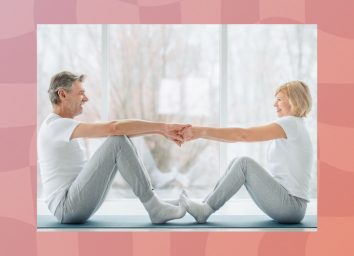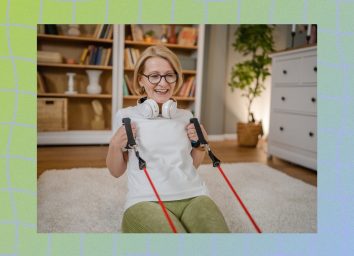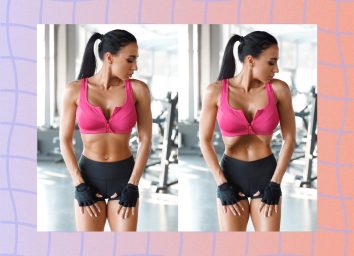10 Best Exercises To Improve Your Muscular Endurance as You Age
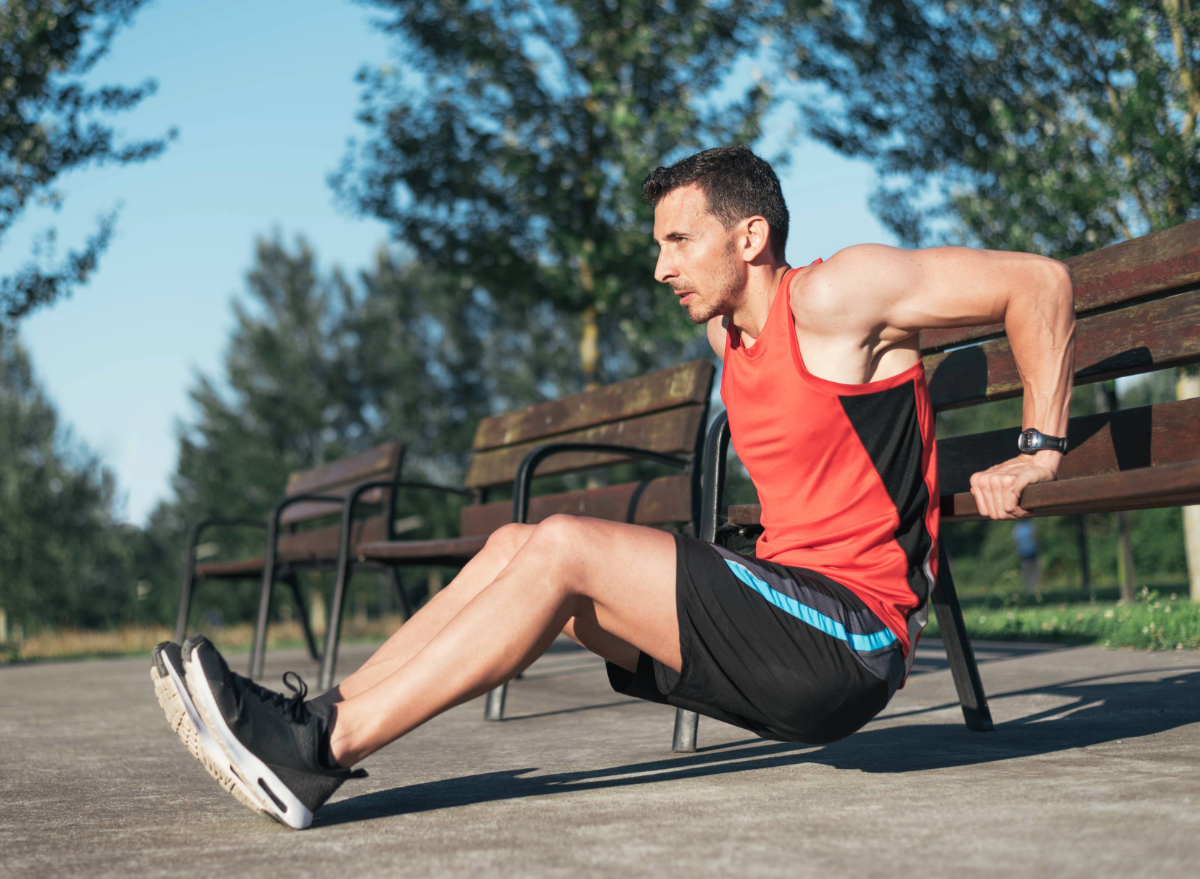
Getting older is no walk in the park. Between stiff joints, sore muscles, and nagging aches and pains, neglecting your fitness and keeping your rear planted on the couch can be tempting. However, failing to maintain your muscular endurance is a surefire way to have less-than-stellar golden years when it comes to your physical well-being. Fortunately, we chatted with personal trainers and fitness experts who share their top 10 exercises to boost muscular endurance as you reach your 40s, 50s, 60s, and beyond.
Before diving into the exercises below, let's first distinguish between muscular endurance (also called stamina) and muscular strength. Muscular endurance is how long you can perform physical activity, while muscular strength is your ability to lift or move heavy objects. Essentially, the more muscular stamina you have, the more "work" you can do while working out.
Research shows that muscular endurance strength training using a moderately heavy load is an effective strategy for combating sarcopenia—the loss of strength and muscle mass that naturally occurs with aging. Additionally, engaging your muscles through regular exercise is crucial for keeping them functional as you age. According to the National Institute on Aging, properly functioning muscles can improve your balance, helping to reduce your risk of falls and injury and keep your mobility in tip-top shape.
Below, read on to discover the 10 best exercises to improve your muscular endurance as you age. And when you're finished, don't miss The #1 Daily Floor Workout To Lose Holiday Weight Fast.
Pushups
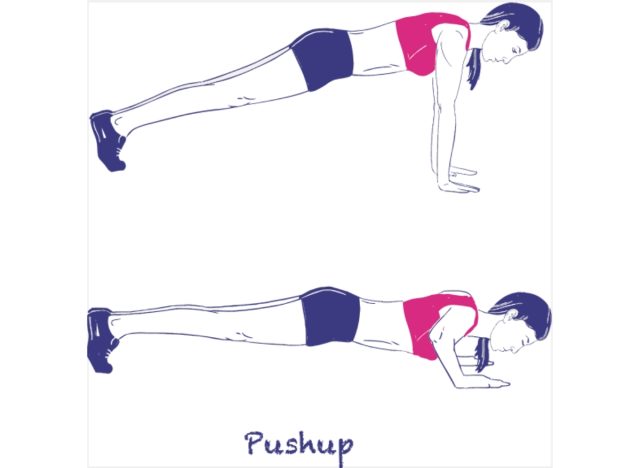
This timeless exercise is a fantastic way to enhance muscular endurance as you age. This move engages multiple muscle groups, from the chest and shoulders to the triceps and core, to promote functional strength that supports everyday activities.
Kyrie Furr, CPT, a certified personal trainer and performance coach with Barbend, says, "The ability to push and control your body weight is a vital, functional movement that has a variety of real-life uses."
Begin in a plank position with your hands shoulder-width apart. Lower your body until your chest touches the floor, then push yourself back to the starting position. Aim for three sets of 10 to 12 reps.
Bicep Curls
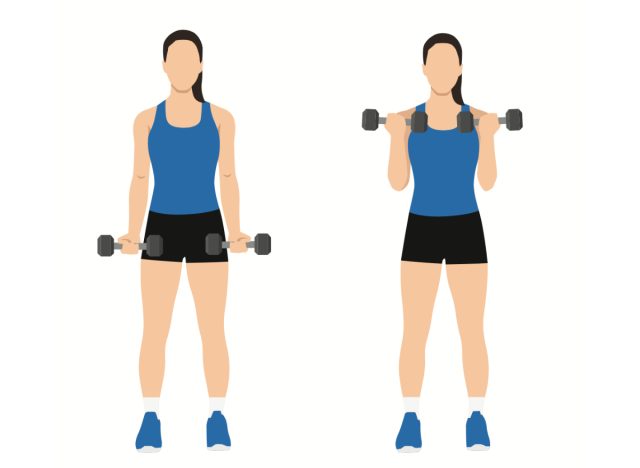
Bicep curls are a simple yet effective choice to boost muscular endurance as you age. This movement will sculpt your arms while increasing overall stability, which is crucial for daily tasks.
"Bicep curls are a great exercise for improving upper body muscular endurance," says Furr. "They're also beneficial for grip strength, which helps with daily tasks like carrying groceries."
Stand with a pair of dumbbells in your hands, palms facing forward. Curl the dumbbells up toward your shoulders, then lower them back down. Complete three sets of 12 to 15 reps.
Tricep Dips
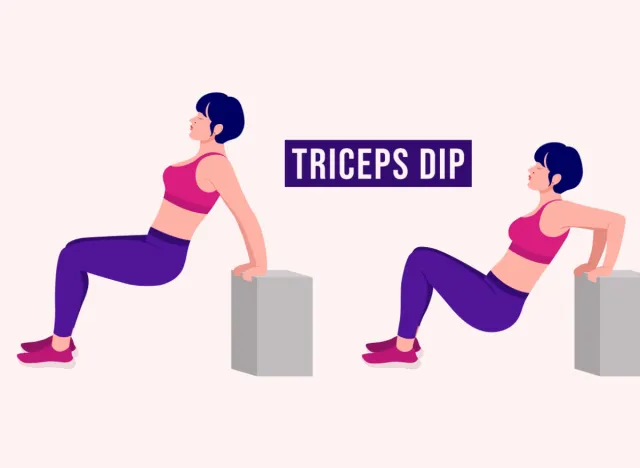
This exercise targets the often-overlooked triceps. Plus, tricep dips are perfect for maintaining upper body strength—a key consideration for older adults.
"Tricep dips are a fantastic exercise for targeting the muscles in the back of your arms. Tricep dips help to strengthen and stabilize your core, strengthen your arms, and help with overhead stability," explains Furr.
Sit on the edge of a chair or bench, placing your hands on either side of you. Slide your bottom off the seat, and lower your body toward the ground, bending your elbows. Push yourself back up to the starting position. Shoot for three sets of 10 to 12 reps.
Bent-Over Rows
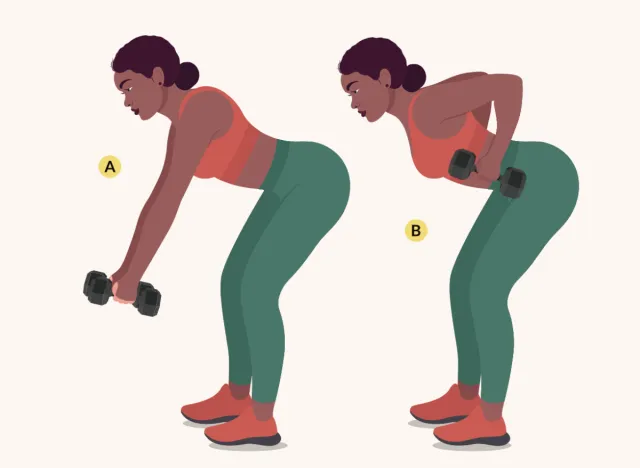
This move targets your back muscles, such as your lats, traps, and rhomboids, to boost upper-body strength.
"Bent-over rows are a great exercise for improving back muscular endurance," says Furr. "Plus, bent-over rows can help improve posture and build strength in your back and core."
Hold a pair of dumbbells in your hands with your palms facing your body. Bend forward at the waist, keeping your back straight, and let your arms hang toward the floor. Pull the dumbbells toward your chest, squeezing your shoulder blades together, then lower them back down. Perform three sets of 10 to 12 reps.
Glute Bridges
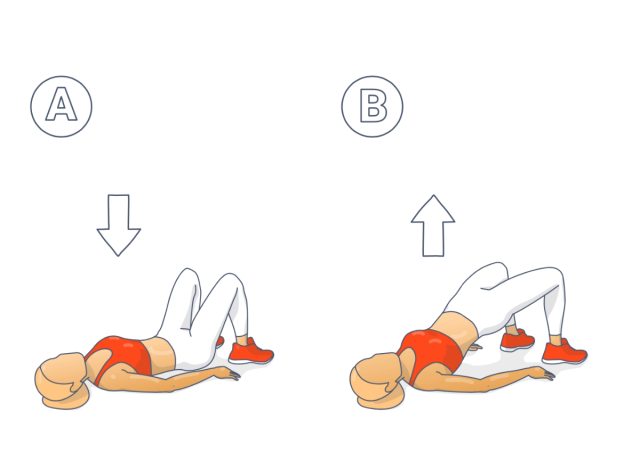
Glute bridges strengthen your lower backside, including the glutes and hamstrings, which helps boost your entire lower body's muscular endurance.
"As we age, we want to strengthen our core, glutes, legs, and hips," Furr explains. "Glute bridges can help with balance and mobility and can help alleviate knee and lower back pain."
Lie on your back with your feet flat on the ground and your knees bent. Squeeze your glutes, and lift your hips off the ground until your body forms a straight line from your knees to your shoulders. Lower your hips and repeat. Aim for three sets of 12 to 15 reps.
Hip Hinge
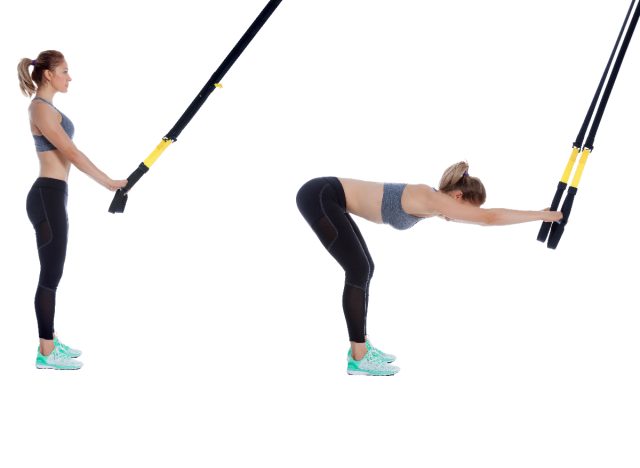
An excellent movement for boosting muscular endurance is the hip hinge, where you shift your weight to your heels and push your hips back against a wall while hinging forward at the hips. (You can also perform this exercise with suspension straps.)
"With the hip hinge, you're not bending forward; you're hinging at the hip," Margie Young, CPT, a Life Time Champions ARORA certified personal trainer, explains. "Start by standing a few inches in front of (but not touching) a wall. Next, keep your feet parallel and under your hips, your core tight, and simply touch your butt to the wall while bending forward. Then, squeeze your glutes to stand back up."
The hip hinge will increase your range of motion (ROM) and allow you to perform daily activities with ease. So, next time you bend over to pick up the laundry basket, use the hip hinge form to save your lower back.
Bodyweight Squats
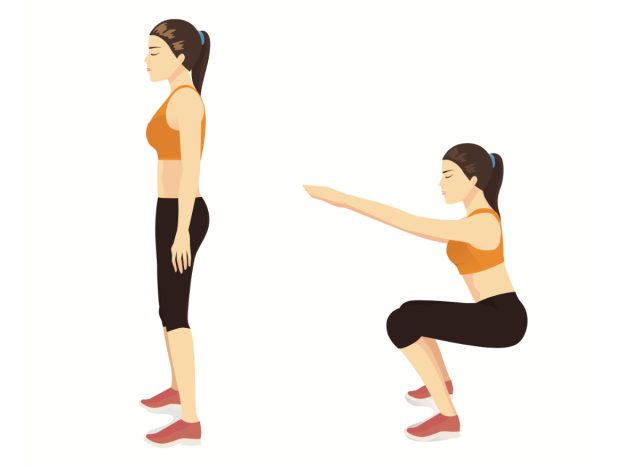
A straightforward exercise that can be done anytime, anywhere is the bodyweight squat. Perfecting bodyweight squats will come in handy the next time you're squatting down to pick up the kids' toys for the seventh time in a day.
To perform these, Young explains, "Sit down and stand up back up, remembering to push through your heels. Multiple sets and repetitions of bodyweight squats help maintain muscle balance and improve functional movement."
Planks
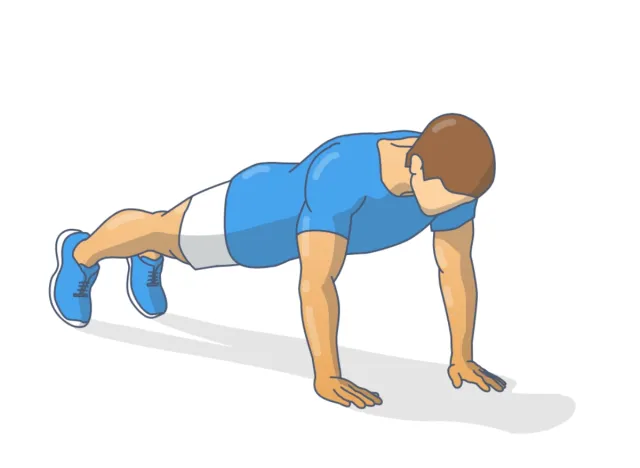
Another great exercise for muscular endurance is the plank. This static hold has several variations that strengthen your core, improve your posture, reduce back pain, and boost coordination. You can do it in a high plank position or on your forearms.
"Plank holds aren't just great for the core, they're great for the entire body and anyone can do them," says Young. "Plank variations include going from a wall to a countertop, the bed or couch, and even the floor. Add intensity by alternating glute-activated leg lift holds while planking."
Step-ups
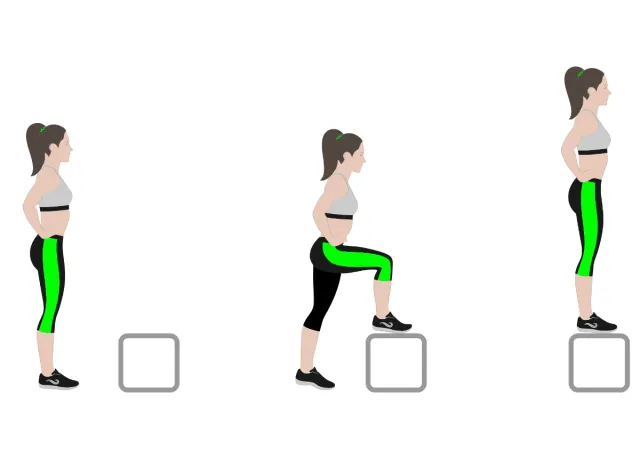
Maintaining control and balance while in motion is essential for increasing muscular endurance as you age. Step-ups are an excellent way to help keep your lower body's strength and balance since your body weight shifts continuously from one leg to the other while in motion.
"Step-ups are a safer alternative to walking lunges that you can do anywhere there's a secure, elevated surface," states Young. "To protect your knees from over flexion, anchor and push through your heels. Add variations by increasing the height of your step-ups or doing single-leg holds to improve your balance."
Breathing
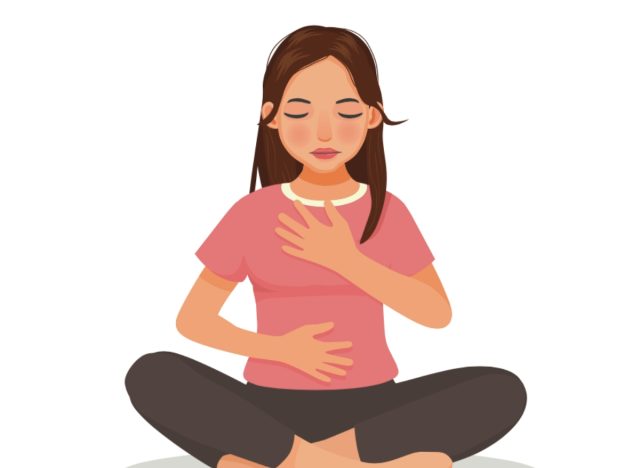
You read that right—good old breathing can enhance your muscular endurance!
Young tells us, "Breathing is an exercise that requires muscles, and most of us do it incorrectly. Your diaphragm is a muscle responsible for 75 percent of respiration. You'll naturally create a vacuum effect for the next inhale while activating abdominal muscles by focusing more on exhaling through your body."
In addition, breathing can enhance focus while oxygenating your blood, helping to reduce stress and induce a calming effect—something we all need more of in our daily lives.

